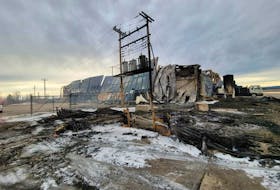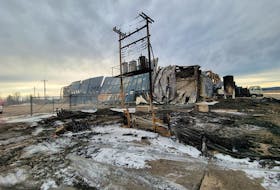GANDER, NL – 2017 wasn’t a good year for Atlantic salmon.
Fisheries and Oceans Canada (DFO) has released its Newfoundland and Labrador species stock assessment and 80 per cent of rivers monitored – 12 of 15 – showed declines of 30 per cent. Four other rivers didn’t have information available.
The department says this is the second consecutive year of significant decline. 2017 returns for Conne River were the lowest on record over the 32-year period.
Spawning escapements (eggs) in Newfoundland were below the limit reference point for nine of the 15 (60 per cent) assessed rivers.
In Labrador, spawning escapements (eggs) were below the limit reference point on three of the four assessed rivers.
This would place 12 out of 19 rivers in the province in the “critical zone,” according to DFO.
“As a scientist, we’ve never seen anything like this,” said DFO scientist Geoff Veinott. “We keep hitting lower and lower bottoms. We may see a recovery in 2018, we may not, but the longer-term outlook seems to be a declining direction.”
According to Veinott, marine survival continues to fluctuate, averaging 5.7 per cent, but still below the five-year average.
Catch rates
When it comes to catch rates, Labrador aboriginal groups and subsistence fisheries took an estimated 13,600 salmon last year, a reduction of four per cent over the last six years.
Recreational angling saw approximately 19,400 salmon tagged and 22,800 released.
While Veinott didn’t make any recommendations at the technical briefing, the DFO scientist did state a catch and release only recreational fishery could reduce salmon mortality rates by 80 per cent for a full season.
Issuing one retention salmon tag could reduce mortality by 50-60 per cent.
When it comes to the impact anglers are having on the species, he said, “any kind of mortality is reducing spawn or abundance.
“We have our best chance of improving returns by maximizing the number of spawners in the rivers.”
Atlantic stock assessment results will be used during fisheries management consultations set to take place with stakeholders throughout the province in the coming weeks.
The assessment, along with recommendations from DFO fisheries management, will be considered by the Fisheries Minister Dominic LeBlanc when making the final decision on the 2018 angling season.

![['<p>Salmon fishing season is open and anglers are getting ready to hit rivers like the great Exploits River, pictured.</p>']](https://saltwire.imgix.net/exploits-2635925.jpg?cs=srgb&fit=crop&h=568&w=847&dpr=1&auto=enhance%2Ccompress%2Cformat)







